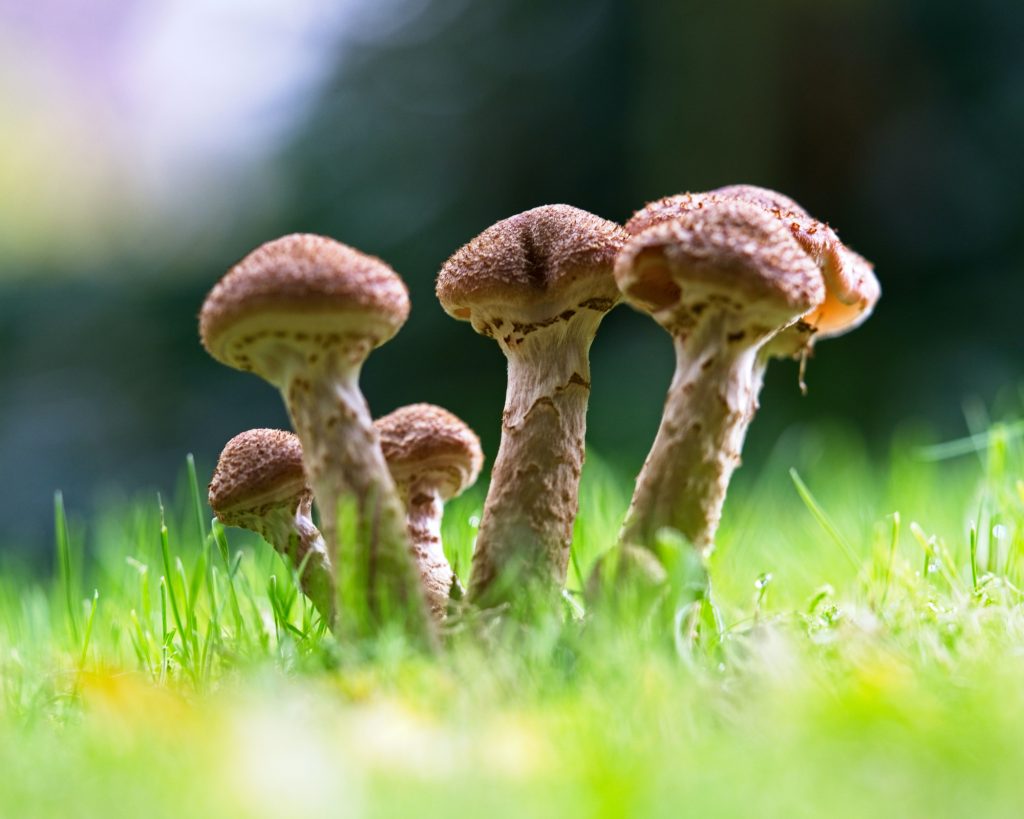
Mushrooms are commonly eaten among vegans and non-vegans alike, but many feel that mushrooms are not suitable for food. Below are a few of the reasons that I personally choose not to eat mushrooms.
(Note: Before anyone starts jumping on their keyboards to chastise me for posting this article, please note that these are my personal reasons for not eating mushrooms. I am not telling you that you cannot eat mushrooms. You are entitled to your personal preferences just as I am entitled to mine.
If you are offended by my personal decision concerning what I eat, then . . . Hmmm . . . I guess we should cancel our lunch date because I also don’t like brown sugar on my sweet potatoes. I prefer Creamy Italian Dressing instead.)
Vegan vs Plant-Based
While there is definitely overlap with a vegan diet and a plant-based diet, they are different.
A plant-based diet is a diet based on fruits, vegetables, whole grains, legumes, nuts, and seeds. A whole-food, plant-based diet uses only unrefined forms of these foods. This type of diet is usually adopted for health reasons.
In contrast, a vegan diet omits animal products usually for ethical or environmental reasons. Generally, vegans do not eat meat, dairy, eggs, or honey or wear animal products, such as leather, or use products tested on animals.
While I do agree with most of the ideology of veganism, I do not consider myself a vegan. Rather, I do my best to follow a whole-food plant-based diet because I believe that is the diet that God gave to humans when He created them. (See Genesis 1:29 and Genesis 3:18, which name grains, seeds, fruits, nuts, vegetables, and herbs.)
I believe that, since God is my Creator, He knows what is best for the health of my body.
Genetic Composition of Mushrooms
If you want to adhere to a plant-based diet, it is important to know what a plant is.
Mushrooms (the reproductive body of a certain phylum of fungi) are not plants. In fact, the genetic composition of mushrooms is actually more similar to humans than to plants.
For example, when plants are exposed to sunlight, they create energy through photosynthesis. When mushrooms are exposed to sunlight, they produce vitamin D (just like humans).
Much like humans, mushrooms store reserve energy as glycogen. Plants store reserve energy as starch.
The length of the ribosomes in mushrooms shows an amino acid that is similar to muscle. In fact, there are several amino acid sequences that are similar to heavy-chain proteins in mammals.
The cell walls of mushrooms are made up of chitin, which also composes the hard shells of insects, crabs, and other arthropods; plant cell walls are made up of cellulose.
The cell membranes of mushrooms contain ergosterol, a sterol that serves many of the same functions that cholesterol serves in animal cells. Ergosterol is not present in plants.
Plants have chloroplasts or chlorophyll. Mushrooms do not.
The protein and amino acid sequences of mushrooms are more similar to animals than plants.
Although mushrooms are often referred to as vegetables, they are not a vegetable at all.
Trophic levels
Plants are autotrophic. They produce their own energy via photosynthesis.
On the other hand, mushrooms are heterotrophs, like animals.
Heterotrophs cannot produce their own food, so they must consume other organisms in order to obtain energy.
Mushrooms are heterotrophs that recycle waste material from other trophic levels. They subsist by digesting dead or decomposing remains of other forms of life. They are scavengers (like vultures in the animal kingdom).
Food chains start with primary producers and end with decay and decomposers. With each step taken away from level one in the trophic levels, there is a significant reduction in health-giving properties.
Insect Nurseries
One of the chief uses of mushrooms in nature is as an insect nursery. Mushrooms are home to the Cecid fly larvae, Phorid fly larvae, Sciarid Fly larvae, Springtails, and many, many more. So much so that the FDA allows an exceptionally large number of maggots, mites, and other foreign material in each can of mushrooms. (I realize that many commercial foods contain insects, but the number allowed on mushrooms is exceptionally large because mushrooms host so many insects.)
Health
The consumption of mushrooms is promoted as beneficial for health; however, history tells us that many foods/products have for years been promoted as healthy only to later find that they were not.
Tobacco is a good example. Tobacco was used by native Americans for hundreds of years. In the 1900’s scientists, physicians, and the general public believed that tobacco had beneficial medicinal properties. For decades, physicians recommended the use of tobacco because it would supposedly aid digestion, help with weight loss, and make one live longer.
Current science recognizes that tobacco actually does offer some health benefits. Smoking eases the symptoms of ulcerative colitis and nicotine seems to protect against the development of Parkinson’s disease. But without a doubt, there are enough negative effects of tobacco – such as lung cancer – to warrant abstinence.
Certain varieties of mushrooms (particularly common button mushrooms) contain agaritine, a chemical reported to be carcinogenic. Cooking destroys some of the agaritine, but not all. In addition, mushrooms contain hydrazine and benzine diazonium both of which are cancer causing agents. It is also known that certain non-poisonous mushrooms cause small intestinal damage characterized by flattening of the mucosa, fusing of villi, and other alterations in the cells of the absorptive surface, causing abnormalities of absorption (which can lead to leaky gut syndrome, celiac sprue, mineral or fat malabsorption, allergies, etc.).
These factors may be small, but perhaps with more research we may find other problems with consuming mushrooms. maybe not. But, when it comes to my health, I’d rather play it safe.
Conclusion
Mushrooms may be tasty, but so are many other foods that don’t fall under the category of a whole, plant-based food. I prefer to fill my plate with health-giving fruits, vegetables, whole grains, nuts, and seeds included in the diet that God gave to humans at creation.
***
Note:
The biological sciences define at least five kingdoms of living things. These are:
money – Examples: bacteria, blue-green algae (cyanobacteria), and spirochetes
Protist – Examples: protozoans and algae of various types
Fungi – Examples: fungies, molds, mushrooms, yeasts, mildews, and smuts
Plantae – (This is the plant kingdom) Examples: mosses, ferns, woody and non-woody flowering plants
Animalia – (This is the animal kingdom) Examples: sponges, worms, insects, fish, amphibians, reptiles, birds, and mammals
Mushrooms are in the fungi kingdom. Much of their cellular structure and function is more closely related to animals than to plants, and they are placed with animals in the monophyletic group of opisthokonts.
You my also like:
